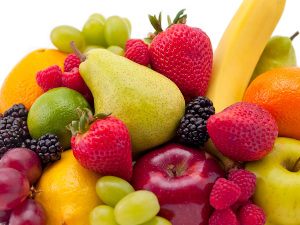New FSMA rule to address traceability for the first time since enactment

With over 48 million people affected by foodborne diseases each year in the U.S., the Food and Drug Administration (FDA) sought to address the public health impact and economic losses caused by these illnesses.
As a result, the Food Safety Modernization Act (FSMA) was passed in January 2011, becoming the first major update to food safety laws in 70 years. Now, nearly 14 years later, the legislation is set for a much-needed update.
FreshFruitPortal.com spoke with Food Safety Key CEO Juan Pablo Avendaño, who analyzed the new 204 rule of the FSMA, its application, and potential challenges for supply chain actors.
“The FDA estimates foodborne disease-related economic losses at $75 billion annually. By comparison, Chile’s top export product, copper, generates annual revenue of $60 billion,” Avendaño explained.
Additionally, he noted, contaminated products can tarnish the reputation of the companies involved and even harm the image of entire countries in international markets. “When there is an outbreak of a foodborne illness, the product and brand are immediately associated with something harmful to consumers,” Avendaño added.
Rule 204 addresses traceability for the first time since the FSMA's enactment, Avendaño pointed out. He explained that work on the rule began in 2018, with trial operations starting in 2023.
The rule aims to simplify and improve the efficiency and accuracy of traceability for potentially contaminated food distributed and sold in the United States. It includes up to 108 regulatory variables for supply chain traceability, such as field geolocation.
“(Traceability) had never been regulated as for how it had to be delivered nor for how long the traceability information had to be stored. These are the major changes proposed by Rule 204,” he said.
The new rule now demands traceability information to be saved for a minimum of two years. This will apply to cheese, nut butter, eggs, cucumber, herbs, tropical fruit and vegetables, as well as ready-to-eat fish, seafood, and crustacean preparations. Fresh-cut fruit is also included.
“All foods that are cut before being sold must comply with these traceability requirements, regardless of the type of fruit. For example, strawberries are not considered in the main list, but if you cut a strawberry and sell it in retail, you must comply with these requirements,” Avendaño stressed.
Aside from cut fruit, tropical fruits are the only ones included in the mandatory list of traceability compliance that the 204 rule will enforce. The reason? Avendaño said: Statistics.
“When someone went in sick to the stomach to a hospital in the United States and doctors inquired about their diet, tropical fruit statistically showed more contagion of foodborne diseases than temperate climate fruits,” he explained.
How can companies comply with the 204 rule?
As for the application of the rule and compliance with the new traceability requirements, Avendaño mentioned that the supply chain components - producers, packers, exporters, buyers, etc. - are often “disconnected” from each other. This, he anticipated, can make it harder for companies to correctly adhere to 204.
“One way to address this is to manually collect all the information they have with the different actors in the supply chain, and another is to use a technological solution such as a Food Safety Key,” he added.
Food Safety Key provides a platform where each supply chain actor can upload and save the required information for each product. In the case of foodborne disease detection, this simplifies the process of identifying the affected products or lots and taking action to recall them.
“The platform is of Chilean origin, today we are working on pilots in Colombia, with mango producers, and we are in the Culiacán area with tomato producers. We’re also starting a trial with a salmon exporting company here in Chile,” Avendaño stated.
The FSMA 204 rule will become effective in January 2026.




















































